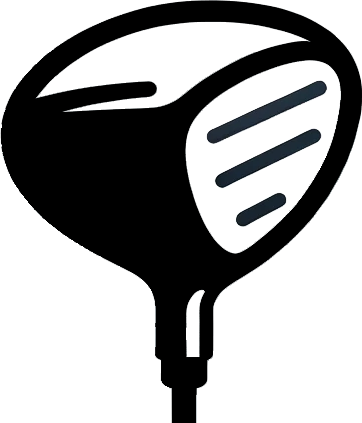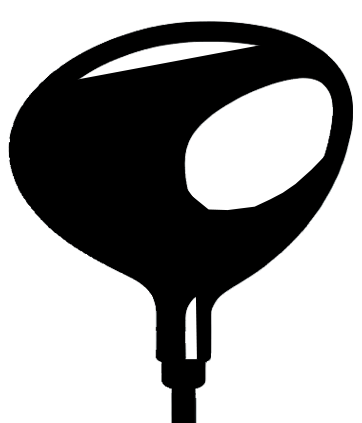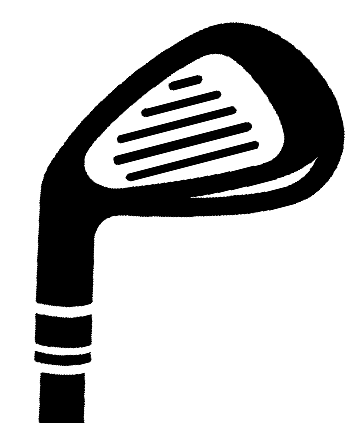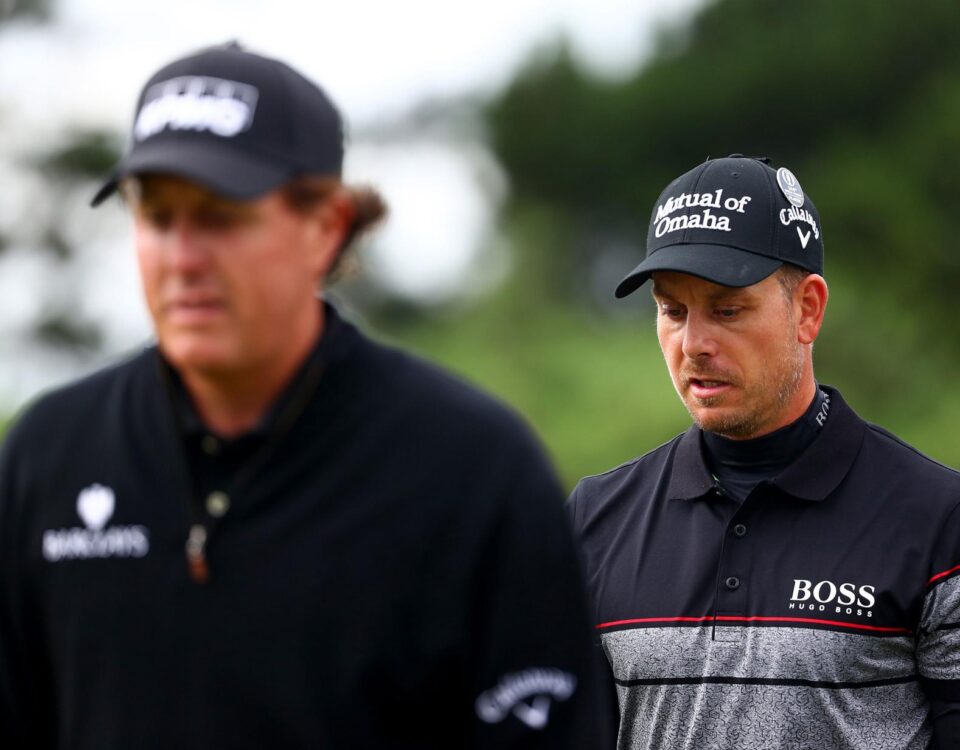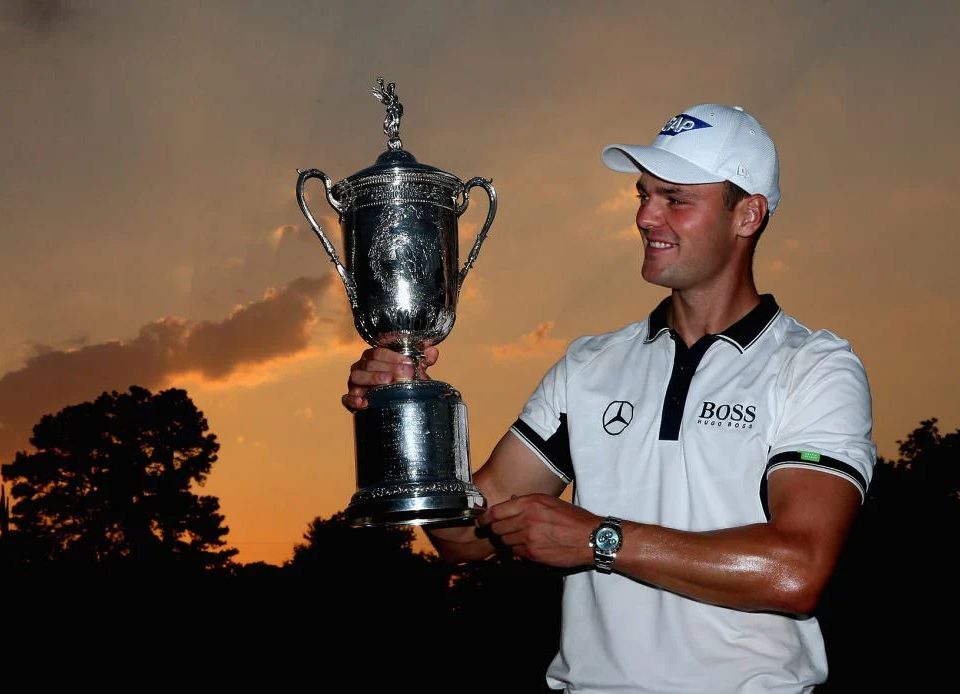
BLIND AMBITION: HOW GOLF REDEFINED LIFE AFTER STARGARDT’s
March 27, 2024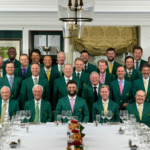
The MOST EXCLUSIVE DINNER INVITE IN THE WORLD OF SPORT!!
April 10, 2024HAROLD SWASH AND THE INNOVATION OF C-GROOVE PUTTERS
Introduction
In November 2010 Francis Ricci the President & CEO of Progear Holdings was authorised to liquidate the assets of the Denver based company. Progear had been in financial decline for a number of years although its main products were still deemed to be some the finest on the market. It had suffered as the perfect storm of the economic banking meltdown and subsequent recessionary aftermath coincided with a period of extensive and overriding expansion.
The name Progear Holdings is not known at all anywhere in the sporting world these days but their main product Yes! Putters are still revered around the world as examples of groundbreaking design, quality manufacturing and innovative marketing. More about this later!
Golf as we know is more than just a sport—it’s becomes a love affair with the great outdoors, the equipment, and the personal challenge to better ourselves as players, it is both an obsession and an addiction.
In this blog we are going to look at at one the most innovative companies ‘Yes! Putters’ as well as a relatively unknown genius, who in my humble opinion should be recognised as one of the driving forces in modern day golf.
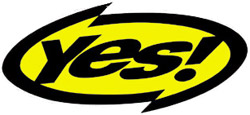
To many newcomers to the game Harold Swash, also known as “The Putting Doctor.” is not widely known however he’s not just any name in the world of golf; to those who know he’s a legend not just because of something he designed, the ‘C-Groove’ Yes! Putters but also of the innovative and revolutionary way he deciphered the art of putting and became a mentor and coach to some of the worlds greats.
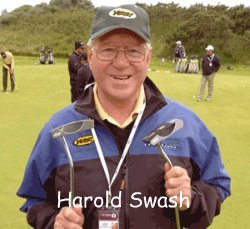
This blog is about diving into Harold Swash’s world, discovering how his ‘C-Groove’ technology changed the game and getting to know why Yes! Putters that became favourites on greens around the world are still the ones to beat with regard to technology. We’ll talk about their big wins, and how they ended up being swallowed up TaylorMade.
Harold came from a small corner of North West England, Southport. He was an Engineer by profession who loved golf and who had a big idea. A new kind of putter design called ‘C-Groove’ technology. It sounds fancy, but the idea is pretty straightforward. By carving circular grooves into the face of the putter, Harold figured out how to get the golf ball to roll smoother, straighter, and with more control. This wasn’t just a small tweak; it was a game-changer that made Yes! Putters stand out from the crowd.
But there’s more to these putters than just the tech. Each one has its own name—like Tracy, Callie, and Victoria—giving them a bit of personality and flair. It was like they’re not just clubs; they’re part of your team, each with its own story to tell. This fun approach to naming them shows just how much Harold wanted to shake things up and add his unique stamp to the game.
As very much the David in the world of corporate Goliaths, the putters not only held their own on tours worldwide but excelled taking their users to the very pinnacle of the sport. To both the professional and amateur alike the proficiency of the C-Groove technology helped players to nail those crucial shots and rack up wins. It’s clear the ‘C-Groove’ technology wasn’t and isn’t just hype; it’s a real edge that players can feel on the course. The praise from top golfers around the globe just goes to show how these putters have changed the game.
Unfortunately at the time when Yes! planned expansion the economic crash put pay and left the business in a perilous position. It was acquired by another legendary name in that period Adams Golf who in turn were swallowed up by the Corporate giant TaylorMade. TaylorMade were more interested in the Adams brand however and sold Yes! golfing brand to Progear Holdings (A South Korean owned company) whose intention was to reinvigorate the Yes! brand.
So, whether you’re a seasoned pro or just getting started, this article will hopefully shed some light to understanding the genius of Harold Swash, the magic of ‘C-Groove’ Yes! Putters, and how they’ve left their mark on golf. From their humble beginnings to their success on the global stage and their resurrection from the flames, we’re here to share the story of how innovation, a bit of personality, and a relentless pursuit of perfection can make all the difference in the game we love.
Who Was Harold Swash?
Harold Swash, better known as “The Putting Doctor” in golfing circles, made a real splash in the world of golf with his knack for innovation, especially when it came to putters. Hailing from Southport, England, his curiosity and passion for the game’s finer points led him down a path that would revolutionize putting—a part of the game many players often overlook but vital for anyone looking to lower their scores. Swash wasn’t just about inventing radical alternatives; he was on a mission to make golfers better, ‘one putt at a time’. His big breakthrough, the ‘C-Groove’ technology, wasn’t just a flash in the pan; it was a testament to his belief that there’s always room to up your game, especially when it comes to the greens.
But Swash’s impact on golf went way beyond equipment. He was all about sharing the love and knowledge of the game, coaching both pros and weekend warriors alike. His legacy isn’t just in the putters that carry his innovative designs; it’s also in the scores of golfers who’ve upped their game thanks to his wisdom and insights.
The list of pros who’ve benefitted from Swash’s expertise reads like a who’s who of golf. Padraig Harrington, for instance, whose major championship wins—including back-to-back Open Championships and a PGA Championship—owe a lot to the putting prowess he honed under Swash’s guidance. Then there’s Sir Nick Faldo, a legend in his own right, whose quest for perfection in every aspect of his game led him to Swash’s. Major Winners like Henrik Stenson, Louis Oosthuizen, Ian Woosnam, Darren Clarke, Paul Lawrie and Rory McIlroy as well as Ryder Cup heroes Thomas Bjørn, Lee Westwood, David Howell, Oliver Fisher and Paul McGinley are just a few more big names that Swash helped to shine on the greens. These players, known for their achievements on the world stage, all have one thing in common: they turned to Swash to help them get the ball in the hole with fewer strokes.

Swash’s coaching magic wasn’t reserved for the elite few; his impact spread far and wide, touching a myriad of golfers across generations. His knack for breaking down and improving a player’s putting stroke was legendary, making him the go-to guy for anyone serious about winning. In the world of golf, where games can be won or lost on the green, Harold Swash’s legacy is as enduring as it is inspiring, proving that with the right approach and a bit of innovation, perfection is within reach.
The Importance of ‘C-Groove’ Design
Harold Swash’s ‘C-Groove’ design had truly shaken up the golfing world by reimagining how a putter can influence the ball’s journey on the green. This clever invention boils down to a seemingly simple tweak: etching a series of concentric grooves right into the putter’s face. But the genius of this design isn’t just in its appearance—it’s in how these grooves fundamentally change the game when it comes to putting.
It is a little known fact but with traditional putters: when you hit the ball, it doesn’t just smoothly roll towards the hole. Instead, it skids and bounces at the start, which can throw off your aim and distance control. The ‘C-Groove’ tackles this problem head-on. Those carefully crafted grooves grip the ball upon impact, cutting down on that annoying skid and getting the ball to roll smoothly and quickly. The idea is to get the ball rolling (literally) on its intended path as soon as possible, giving you a better shot at sinking it.
High Speed Video of C-Groove Putter vs. the competition
Demonstrations have clearly shown golfers how the patented grooves create more ‘dwell time’ and start the golf ball rolling toward the hole more quickly than other brands of putters. This action minimizes the ‘skipping’ that can cause putts to veer off-course. C-Groove putters have been shown to produce up to a 600% purer roll than other brands of putters including Ping, Titleist, Wilson and Odyssey.
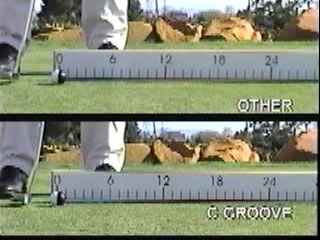

Immediately after impact.
C-Groove putter is shown on bottom, immediately after impact. The golf ball struck by the C-Groove putter has completed 1/4-turn. Other brand has not started rolling.
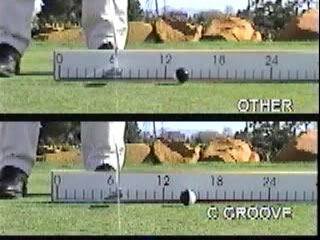
At 14 inches

At 20 inches
At 14 inches, C-Groove golf ball has completed 1/2-turn. Other brand still “skipping” forward and begins to rotate on it’s vertical axis (spin sideways). At 20 inches, C-Groove golf ball has nearly completed a full turn. Other brand begins forward roll.
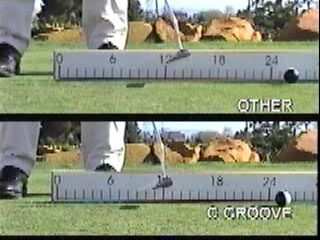
At 26 inches
At 26 inches, the golf ball struck by C-Groove has completed 1.5 turns. Other brand begins to roll with 1/4 turn and has also rotated sideways 1/4 turn.
As Swash himself stated “When a regular putter face hits a golf ball it results in loft, causing skidding, side and even backspin before the ball can start rolling forward. By gripping the back of the ball and lifting it forward on impact, the C grooves of a Yes! Putter create almost instant stabilisation, causing the ball to roll forward as much as six times sooner than any other putter.”
What’s really impressive about the ‘C-Groove’ isn’t just the science behind it; it’s the immediate difference it makes. Golfers who’ve switched to these putters often notice a quicker, smoother roll, with the ball sticking to its path like it’s on rails. And we’re not just talking about feel-good anecdotes here. This improvement has been seen in the hands of weekend golfers and pros alike, with some players crediting their ‘C-Groove’ putters for game-changing putts and even tournament wins.

Using the Yes! C-Groove putter creates stabilization in the rolling motion dramatically sooner than any other putter. Forward rolling motion is as much as 6 times greater with the use of the Yes! C-Groove putter versus other putters.
This result has been proven using a computer controlled putting robot and high-speed cameras. Over a 20 foot putt, the C-Groove putter was tested by an independent testing company against several putter models of the major golf companies. In all cases, the C-Groove putter dramatically outperformed the competition.
Whether struck dead center, a millimeter or even a quarter inch off center, the C-Groove putter rolls the ball sooner, for more consistent length and more consistent direction. That translates to more putts made, no matter the circumstance, no matter the pressure.
This technology has been proven in thousands of comparison tests performed by professional and amateur golfers at over 75 PGA Tour Events worldwide and at major trade shows in the U.S. and Europe.
But Harold Swash’s impact goes beyond just crafting a better putter. His ‘C-Groove’ design sparked a bigger conversation about how we think about golf equipment altogether. It’s proof that sometimes, it’s the smallest tweaks that can make the biggest difference, inspiring golfers to keep pushing the envelope in the quest for that perfect round.
In essence, the ‘C-Groove’ design is more than just a technical triumph; it’s a symbol of the spirit of innovation that drives golf forward. It also shows that creativity and innovation are not limited to the large R&D departments of the ‘Corporates’.
By showing that a change in equipment can significantly improve performance, Swash has encouraged a culture of continuous improvement and experimentation. Whether it’s reducing the skid of the ball for more precise putts or inspiring the next big breakthrough in golf tech, the ‘C-Groove’ legacy is all about pushing the boundaries of what’s possible on the green.
Quirky Names and Design Philosophy
Harold Swash’s Yes! Putters stand out in the golfing world not just for their groundbreaking ‘C-Groove’ technology, but also for their unique names and the philosophy behind their design. It’s a blend of innovation and personality that really captures the essence of what Swash was all about. Naming putters like Tracy, Callie, and Victoria wasn’t just a quirky marketing move; it was a reflection of Swash’s belief that every putter, like every golfer, has its own character and story. This personal touch made choosing a Yes! Putter feel more like picking a partner than just selecting a piece of equipment. It’s this emotional connection that has made Yes! Putters beloved by so many in the golf community.
He named the first one after his daughter Heather and all 25 putters in what became the single largest range in the world has a girl’s name.
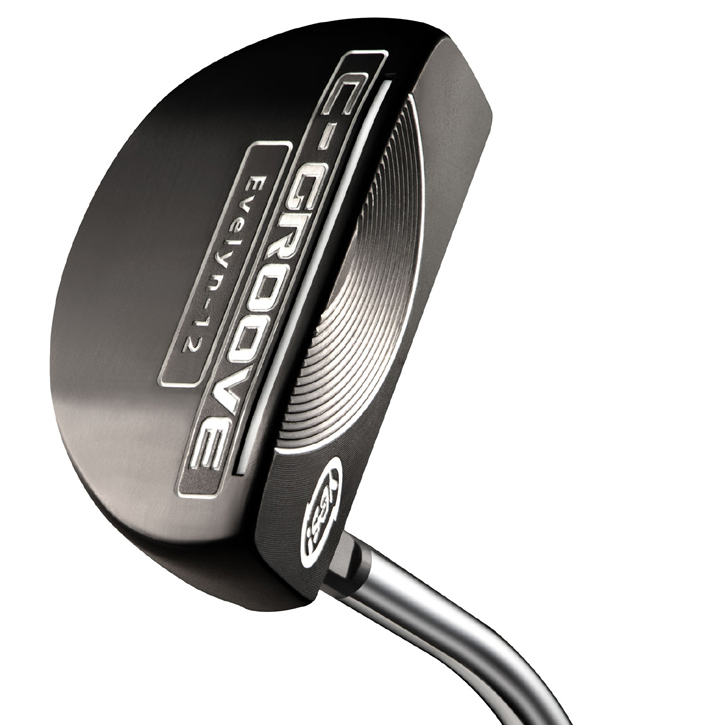
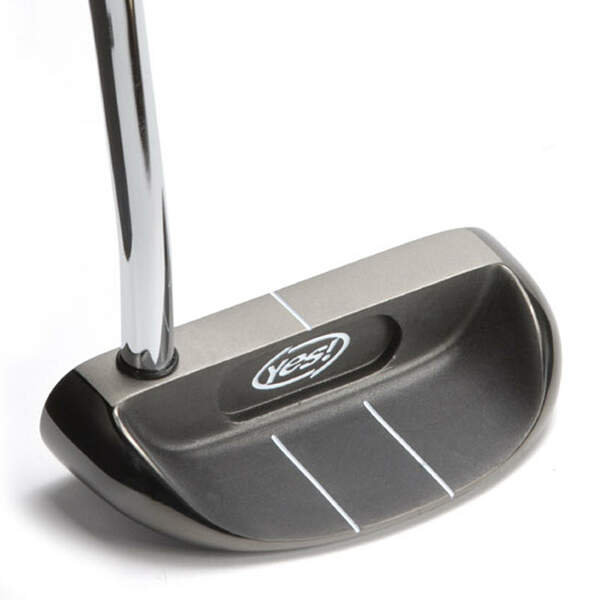
South African Retief Goosen used one of Harold’s putters to win his first US Open and promptly called the club Tracy, his wife’s name, before lifting the same title three years later.
The range featured the likes of The Abbie, named after Harold’s great grand-daughter, while there are also putters called Donna, Natalie, Tiffany, Callie, Milly, Victoria, Eleanor, Emma, Pippi, Sandy, Courtney, Olivia, Evelyn, Rachel, Sara, Mollie, Dawn, Stephanie, Sophia, Stacy, Bella, Jenny, Christina, Ann, Morgan, Madison, Dianna, Carolyn, Ashley, Penny, Laura, Gina and Marilyn (after Marilyn Monroe). This is the best I can do let me know if I have missed one.
But Swash’s creativity didn’t stop at naming. His approach to the design of Yes! Putters broke new ground. He didn’t just focus on the technical side of things, like the ‘C-Groove’ technology. Swash was all about challenging the norms of putter design, paying close attention to every detail to make sure each putter was perfectly balanced and felt just right in the hands of a golfer. His designs went beyond the science of putting, incorporating a craftsman’s care to ensure each putter was as much a piece of art as it was a functional tool.
What’s more, the range of Yes! Putters, with their varied shapes, weights, and balances, showed that Swash understood golfers aren’t all cut from the same cloth. This tailored approach means there was a Yes! Putter out there that feels like it was made just for you, no matter your style or preferences. This combination of scientific innovation and personalization is what really set Yes! Putters apart in the world of golf.
In short, the quirky names and thoughtful design of Yes! Putters reflect Harold Swash’s vision for a putting experience that’s not only effective but also personal. He managed to revolutionise putter design while also building a brand that golfers felt a deep connection with, offering both top-notch performance and a touch of personality on the green.
Successes on Tour
From their inception to their sale ‘Yes’ putters won over 60 times on tour in a very short period of time.
- Late 1990s: Yes! Putters was founded, emerging from Harold Swash’s passion for improving putting performance. Swash, already renowned for his expertise in putting, brought his innovative vision to the brand, aiming to revolutionize putter design.
- 1995: Harold Swash, leveraging his deep understanding of putting mechanics and his nickname “The Putting Doctor,” officially joins Yes! Putters as its head designer. This period marks the beginning of Swash’s work on the ‘C-Groove’ technology.
- Late 1990s to Early 2000s: Development and testing of the first ‘C-Groove’ prototypes. Swash’s innovative design, featuring concentric grooves on the putter face, was finalized during this time, setting the stage for production and market introduction.
- 2001: The first major tour win attributed to a Yes! Putter, highlighting the effectiveness of the ‘C-Groove’ technology at the highest levels of professional golf. This victory served as a significant validation of Swash’s design principles.
- 2004: Retief Goosen wins the U.S. Open using a Yes! Putter, one of the most notable victories that showcased the brand’s impact on professional golf.
- 2007-2008: Padraig Harrington captures two Open Championships and one PGA Championship using Yes! Putters, marking a period of significant visibility and success for the brand on the global stage.
- 2010: Economic challenges lead Yes! Golf to face financial difficulties, despite the brand’s success and reputation among professional and amateur golfers.
- January 2011: Adams Golf announces the acquisition of Yes! Golf’s assets in a bankruptcy sale. This acquisition marked the end of Yes! Putters as an independent entity and the beginning of a new chapter under Adams and shortly after TaylorMade’s umbrella.
- Post-2011: After the acquisition, the ‘C-Groove’ technology’s future became uncertain, with TaylorMade not actively incorporating it into their product line and the patent eventually lapsing, allowing other brands to explore similar technologies.
Golden Years
Since introduction to Professional Tour Golfers starting in 2001, approximately 100 tour players throughout the world used C-Groove putters. Unlike major brand golf companies who pay Professional Golfers to use their equipment, the players referred to below used C-Groove putters without pay because of superior performance.
2001 & 2004 Retief Goosen US Open Winner used Tracy model (named after his wife).
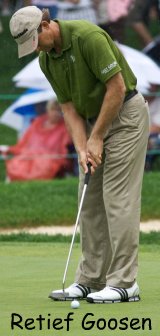
Spaniard Ignacio Garrido wins the 2003 Volvo PGA Championship immediately after switching to the Emma C-Groove putter. At the same time, the runner-up in a tournament on the Japanese PGA Tour also used an Emma putter for the first time.
Overall, 60 Professional Tournaments including the US Open * Players Championship have been won by players using C-Groove putters.
Using C-Groove putters, 6 players won Tournaments on the Canadian PGA Tour.
2 new Canadian PGA Tour records were established by a player using C-Groove putters.
– all time record low score of 58
– most consecutive birdies in one round (8).
5 Professional Golfers used a C-Groove putter in the 2003 US Open.
C-Groove putters ranked among the top 3 putter brands used on the Canadian Tour and the LPGA Futures Tour.
C-Groove putters ranked number 1 two years in a row by RankMark, an independent club testing company.
So Why Did Yes Golf Go Bust?
A couple of times already we have described of the economic difficulties experienced by YES! what but actually caused this?
From everything we have tried to find out it simply looks like ‘Too Big Too Soon’, the company grew exponentially based on the success it was having and rather than have a controllable number of models and allow them to evolve it created over 25 different models in a little over 10 years! It was just unsustainable.
The change from a small brand which creates great quality equipment, to a brand with a huge range of putters is not an easy or cheap transition to make. The amount of stock and supply chain challenges alone to keep manufacturing and supply of 25 models was enormous. The list of unsecured creditors at the end numbered more than 200, with claims totaling approximately $2 million, most with small claims. However, there were some interesting names on the list, including the Darrell Survey ($6,525) and five tour players: Rachel Hetherington ($9,600); Edoardo Molinari ($8,750); Kristy McPherson ($8,150); Mikaela Parmlid ($3,050) and Rosie Jones ($2,500).
The Sale to TaylorMade
The journey of Yes! Putters is a fascinating tale of innovation, challenge, and rebirth within the golf industry. Founded by Harold Swash, a pioneer known for his ‘C-Groove’ technology, Yes! Putters carved a niche for itself by offering golfers something truly unique. However, the story took a dramatic turn in late 2010 when Yes! Golf, despite its technological advances and loyal customer base, faced financial difficulties that led to bankruptcy. This could have been the end, but Adams, a household name itself in the golf equipment market, saw an opportunity in Yes! Golf’s challenges.
The acquisition of Yes! Putters by Adams however was not the end or even the rebirth of the brand as very shortly after the acquisition TaylorMade acquired Adams Golf.
Despite the high hopes, the story took an unexpected twist. TaylorMade’s integration of the ‘C-Groove’ technology into its lineup didn’t materialize as many had hoped.
New models were launched between 2011 and 2014 but whether the market had moved on, or the marketing didn’t hit the right note, it difficult to say but sales were disappointing, the designs were still as innovative especially in the 2014 ‘True Alignment’ range which had a distinctive Yellow Band across the top.

The patent for the ‘C-Groove’ technology eventually lapsed in 2015 creating an opportunity for other brands in the industry to explore and incorporate similar groove designs into their putters. This shift in strategy opened up the competitive landscape but also raised questions about the future of ‘C-Groove’ technology and its place in golf innovation.
Bettinardi, a brand known for its precision and quality, seized the opportunity to explore groove technology in their putters, reflecting the ongoing relevance and potential of Harold Swash’s original concept. This move by Bettinardi and others underscores a dynamic aspect of the golf equipment industry—the continuous evolution of technology and the importance of patents in shaping the competitive environment.
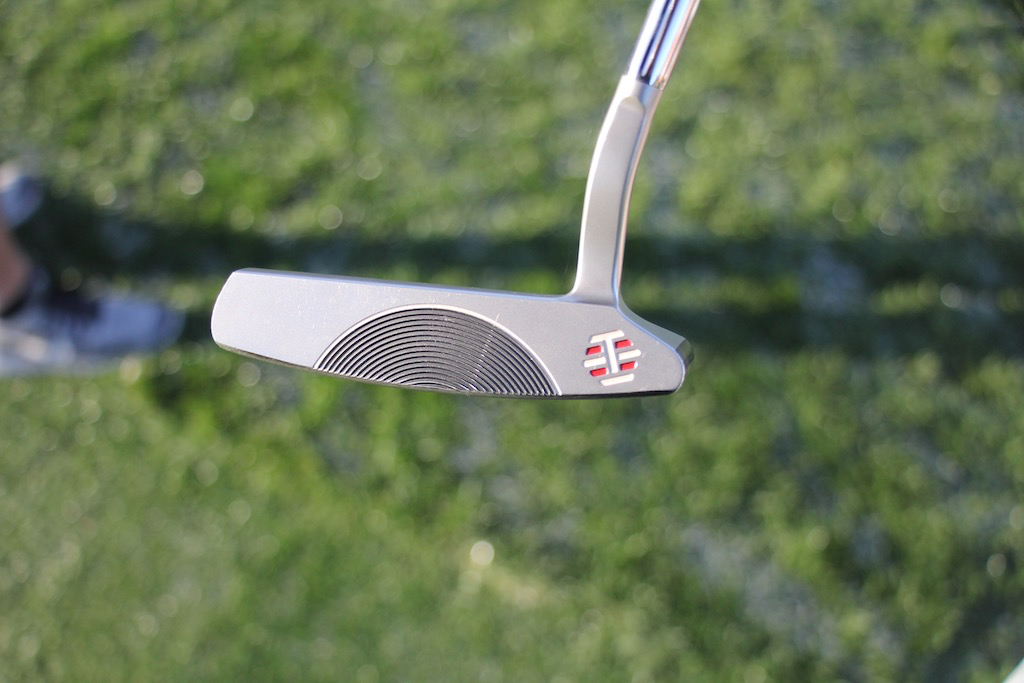
The decision by TaylorMade not to further develop the ‘C-Groove’ technology might have been influenced by various factors, including market trends, strategic priorities, or the complexities of integrating new technologies into existing product lines. However, this development opened the door for other manufacturers to innovate and offer golfers new options for improving their game, in line with Swash’s vision of continual improvement and precision on the greens.
Looking back, the transition of Yes! Putters from its founding by Harold Swash to its acquisition and beyond is a testament to the complexities of innovation and market dynamics in the golf industry. While TaylorMade chose a different path for the ‘C-Groove’ technology, the Harold Swash’s innovations lived on and his creative mind never stopped innovating.
Harold Swash himself continued developing innovative putter designs joining Lynx Golf in 2014 and designing The Pyramid Groove designs range of putters.

Again these putters were unique in their trapezoid shape milled into the gold coloured aluminium face insert where a central section of horizontal grooves is met by two sets of side grooves running at 60 degree angles.
Over three years in design and testing, the revolutionary pattern combated the ‘gear effect’ on off-centre strikes – where impact towards the toe of the putter causes putts to finish short right and impact towards the heel causes putts to finish short left.
Said Harold: “Off-centre strikes produce side-spin and shot curvature as the putter rotates slightly at impact. Our new groove design is corrective and counters those damaging effects, bringing the ball back online and generating consistency and better grouping.”
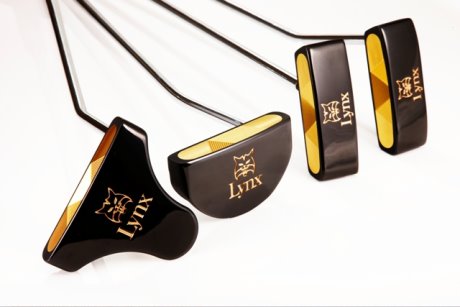
‘Swash By Lynx’ also introduced two new alignment aid technologies: one to help the golfer keep the putter head square at address and impact; the other to ensure the golfer’s eyes stay directly over the ball – one of Harold’s key coaching principles for over 40 years.
The Isis and Luxor blade style putters, Memphis mallet and Rameses supermallet all feature a high contrast 3mm wide gold alignment stripe running the length of the putter head set against a matt black finish.
This highly visible design illustrates instantly if the head is not square to the target line of putt.
Other brands’ interest in groove technology showcases the lasting impact of Swash’s work and his enduring legacy in the sport of golf. This ongoing interest and adaptation of groove technology by various manufacturers not only honour Swash’s contributions but also ensure that his vision for a better putting experience continues to influence the game.
Conclusion
Following Harold’s death in 2016 tributes poured in from all four corners of the globe, his high-tech putting school is today based at Formby Hall and run by Phil Kenyon who has fellow professionals Mike Kanski and Lee Sullivan in his team. Phil today is renowned as the foremost putting coach in the world and is much sought after by the World’s leading players. His mentor would have been proud on how he has taking his teachings to a new generation.
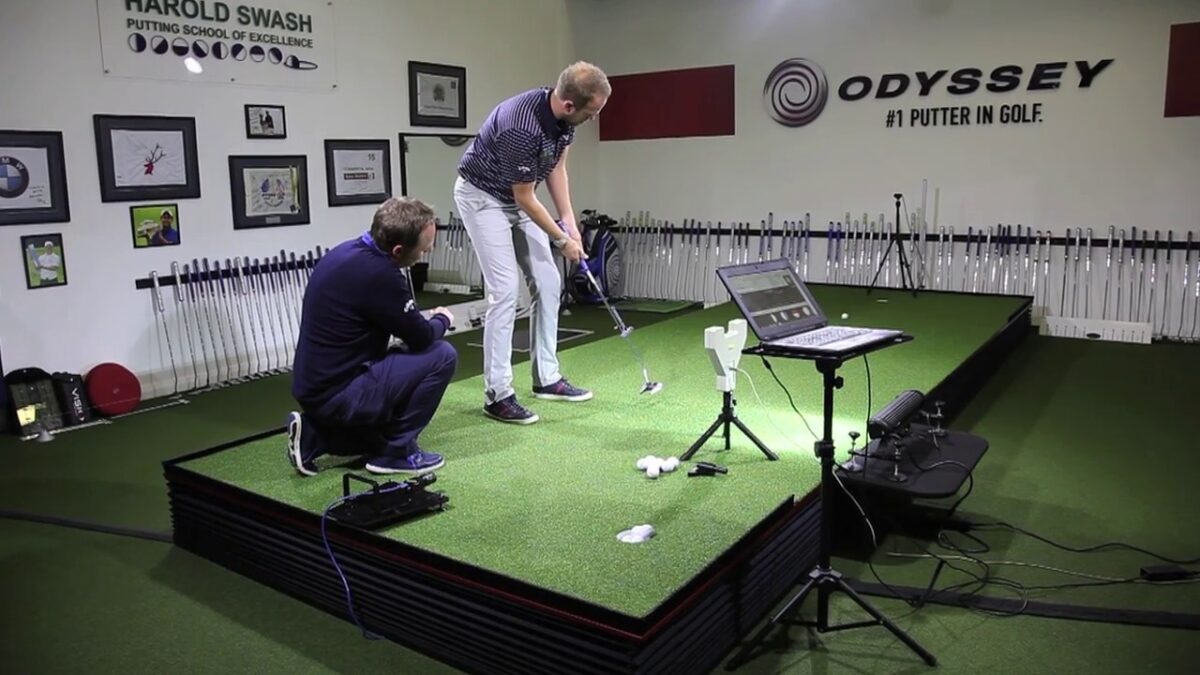
Harold Swash’s ‘C-Groove’ Yes! Putters made a big splash in golf, showing us how a smart idea can really change the game. These putters, with their special groove technology, really shook the world of golf for a few years, giving golfers better control and a smoother roll when they putt. Even though there’s been a lot of ups and downs for the brand, like getting bought by Adams and then TaylorMade and then the patent running out, the ‘C-Groove’ idea itself has stayed solid in the golf world.
However, in 2023, Adams Golf began to make a comeback in the golf market, releasing clubs and more importantly putters which feature C-Grooves you’d have seen before on a Yes! Golf putter.
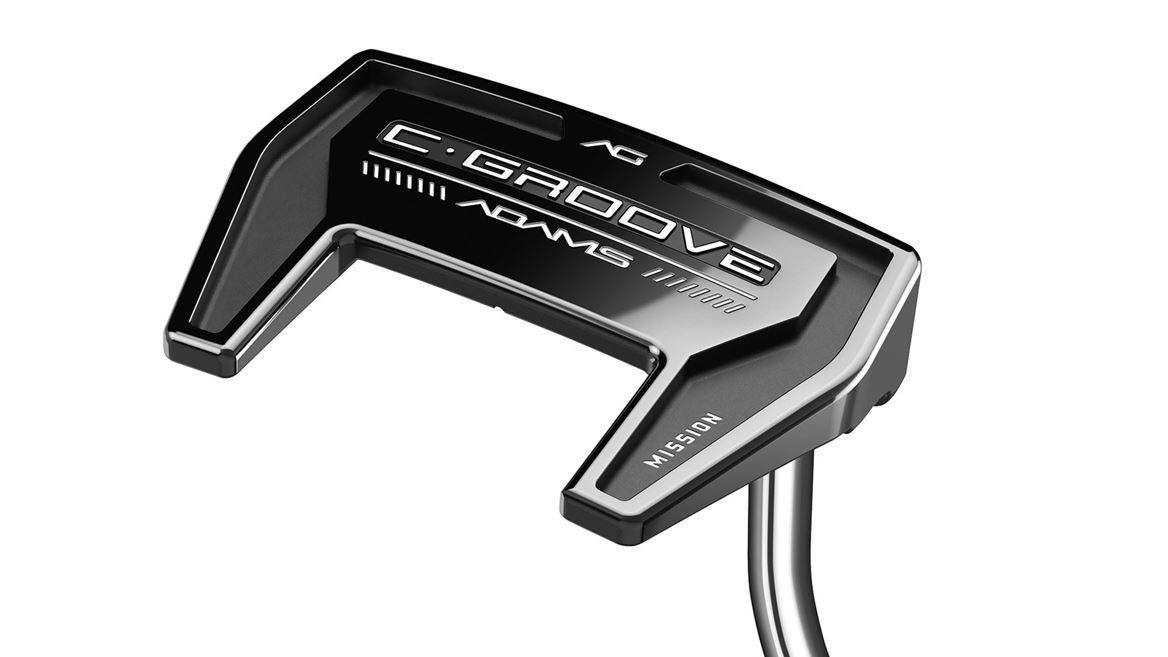
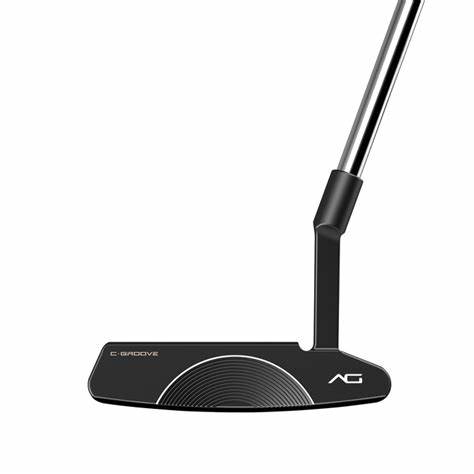
So although the brand Yes! Golf might not be about to hit the shelves of golf shops anytime soon, the technology which created such an amazing roll and helped win a Tour Championship and multiple majors will again be available to purchase.
As mentioned previously the Yes! Tracy II design can also often be seen on the PGA Tour being used by Matt Fitzpatrick, although this is a custom model designed by Bettinardi to replicate what the US Open champ had used since he was 16.
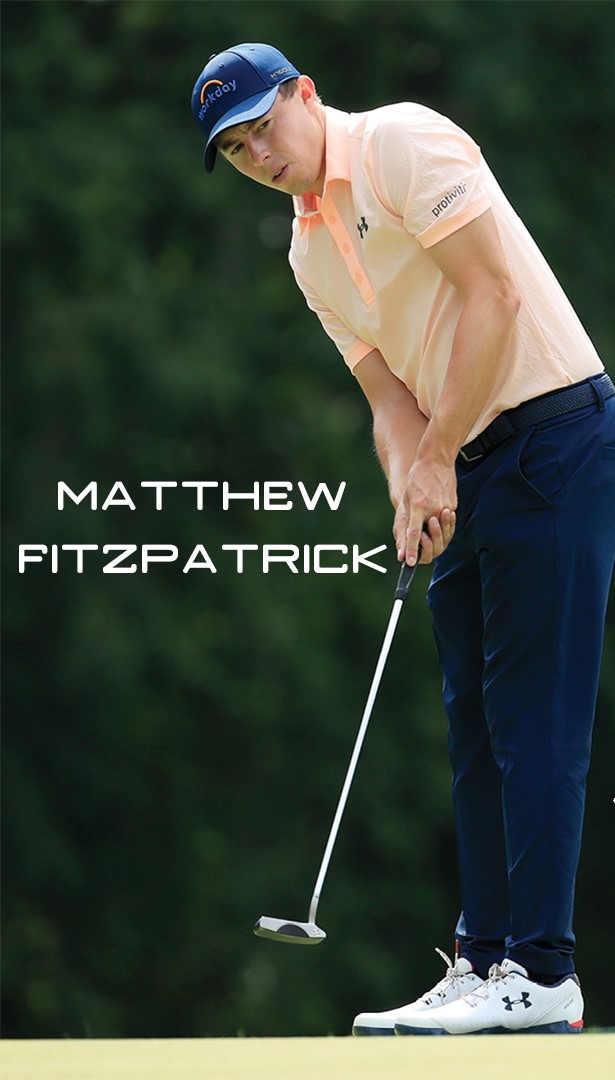
The custom model features Bettinardi’s Roll Control face grooves which are identical to the C-Grooves first developed by Yes!.
So although it’s unlikely we’ll ever see Yes! Golf creating putters in the golf club industry again, we will continue to see the technology they created decades ago to help promote a far truer roll on the putting surface.
The impact of these putters is huge. They’ve inspired other brands to try out similar ideas, proving just how good Swash’s invention was. Golfers who’ve tried a ‘C-Groove’ putter often talk about how much better their putting got, thanks to the accurate and smooth way the ball rolls with these putters.
Nowadays, with all sorts of new golf gear coming out all the time, finding a ‘C-Groove’ putter, especially a used one, is like finding a hidden gem. It’s not just about getting a tool that can help you play better; it’s about owning a piece of golf history. So, for anyone who loves golf or wants to get better on the greens, grabbing a ‘C-Groove’ putter if you come across one is a smart move. It’s more than just buying a putter; it’s about connecting with a game-changing moment in golf.


